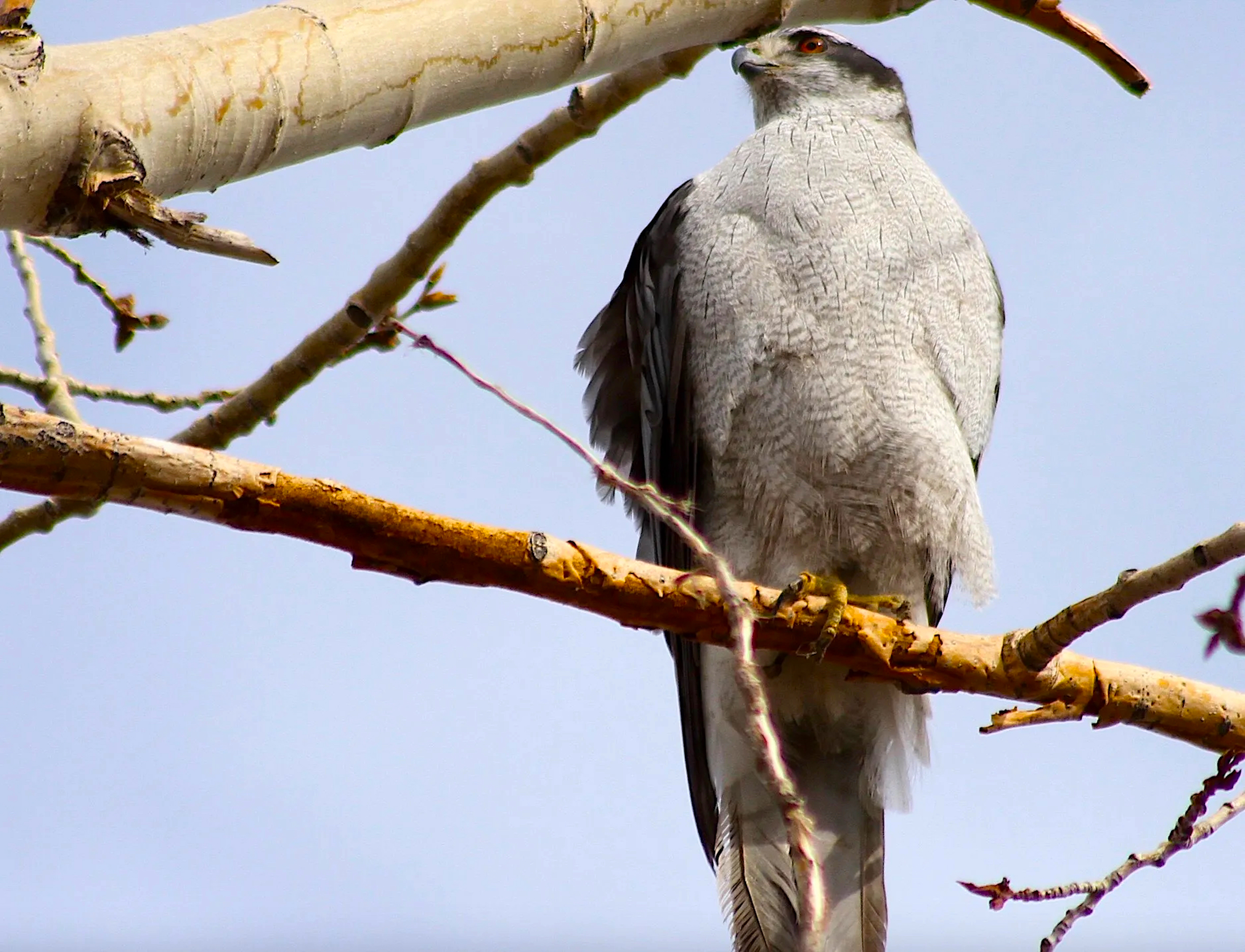Forest-dwelling raptor, aka ‘flying mountain lion,’ goes for groceries in the city

FROM WYOFILE:
Goshawks, the largest of the accipiters, are most often seen in forests, but an adult male recently made a foray into Pinedale.
Bryan Bedrosian’s best guess is that the bird was out on the hunt.
One thing for certain is that the northern goshawk, perched in a Pinedale aspen, wasn’t in its standard habitat. Goshawks, the largest of North America’s three accipiters — acrobatic bird-eating specialists — typically dwell in the forest. Yet this hawk, an adult male based on its pale plumage and thin vertical chest stripes, was in a town surrounded by the sagebrush-dominated high desert.
Bedrosian, an avian biologist who works as the Teton Raptor Center’s conservation director, has seen this behavior before.
“We had 16 goshawks with transmitters here in [Jackson Hole] over the years,” he said. “The bird that was nesting up near Snow King, that bird hung out in town a lot foraging. I suspect collared doves, the more urban birds it was picking off.”
The male goshawk in Pinedale was probably doing the same, Bedrosian said. Females tend to stick tighter to nest sites in treed areas, but males will roam much wider in search of a feathered or furred meal.
And for goshawks, coming out of the forested mountains down into the sagebrush sea wouldn’t be completely unheard of. The Wyoming Game and Fish Department, which classifies goshawks as a “species of greatest conservation need,” reports that in winter the accipiters are known to use “non-forested, open habitats such as shrublands.”
Although he may have been hunting, no birds were harmed during the half hour or so the goshawk perched in a backyard aspen tree on the afternoon of April 7. A handful of crows hung tight most of that time, “mobbing” the raptor with little effect.
When goshawks do decide to strike, it’s a sight to be seen — the nickname “flying mountain lion” has even been thrown around. Goshawks primarily prey on grouse and squirrels, Bedrosian said. They’re territorial, aggressive and even known to give unsuspecting humans a love tap with their talons.
“I’ve gotten tagged,” Bedrosian said. “Climbing up a nest tree, getting hit by the female and drawing blood on the back of my head.”
WyoFile is an independent nonprofit news organization focused on Wyoming people, places and policy.
This story was posted on April 18, 2025.








